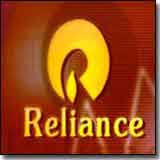
Source : BL :S. Murlidharan: May 27,2010
The promoters of the undivided Reliance group have always been known for their savoir faire, often bordering on chutzpah. Not for them the conventional, weather-beaten path. Innovation and out-of-the-box thinking have characterised their functioning, to the extent that the competition has always been found wanting.
Their relentless pursuit of targets has many a time invited flak. The government of the day at the Centre in the 1980s came in for sharp criticism when it played ball with Reliance in allowing the impossible — conversion of non-convertible debentures into shares. The move not only was heretical but resulted in conserving cash for the company.
To Reliance's credit, however, even its diehard critics concede that it always rewards its three-million-strong shareholders handsomely.
Naturally, the market, far from taking umbrage to the daring financial innovation, gave its thumbs up. Its popularity with investors has always been very high, so much so that it could afford to bypass financial institutions for borrowings.
A votary of disintermediation, Reliance got all the funds it needed through borrowings from the public. It also pioneered the idea of keeping new units off its balance-sheet, only to merge them with it once teething troubles were over. It has two large refineries with capacities of 27 million tonnes each.
SPLIT AND TEMPORARY TRUCE
The demise of its founder, Dhirubhai Ambani, in 2004 led to his two sons parting ways and charting their own future. The upshot was the division of spoils, resulting in two mini empires being carved out of the undivided family conglomerate, with the flagship company Reliance Industries Ltd (RIL) going to the elder son, Mukesh. Younger brother Anil got a mélange of products and services that denied him the advantages of core competence and a share in the exciting business of oil.
The truce, earlier brokered by their mother, was founded on a few delusions:
The family agreement would have the effect of binding their respective companies;
The non-compete agreement, a corollary to, and a sub-set of, the family settlement is sacrosanct and fool-proof; and
Disentangling of cross-holdings in the companies appropriated by the brothers amounted to demerger.
PATCH-UP THAT FAILED
It was apparent that the truce was fragile. To take the last point first, demerger can happen only when a product or service division is spun off into a separate company, which admittedly was not the case inasmuch as the energy and telecom divisions, for example, were not arms of RIL but standalone companies.
It is amazing that everyone including the regulators could have been taken in by the claim that disentangling of cross-holding amounted to demerger.
Of course, the grand delusion paid off in the form of tax benefits intended for corporatisation of the divisions.
The Supreme Court disabused the first aspect of the agreement recently when it held that a family agreement cannot be made binding on the companies controlled by the parties to the agreement unless ratified by the companies concerned.
It now appears that the family settlement was crafted more with heart than with mind as if to make post-haste amends for shutting out the younger sibling from the oil scene, and instead guaranteeing the companies under his stable a concessional price for gas from RIL.
The second assumption that non-compete agreements are sacrosanct and foolproof had surprised many who knew that such agreements often were complied more in breach. Entrepreneurs get around the restrictions by setting up layers of investment companies.
It is just as well that wisdom has dawned on the Ambani brothers, who have agreed to smoke the peace pipe and scrap the non-compete agreements, except for gas-based power production.
BENEFITS OF UNITY
Dhirubhai Ambani must be smiling wherever he is at the latest turn of events. They herald the possibility of the estranged brothers coming together again and in the process merging the companies belonging to them under the banner of RIL, which would catapult it further up in the Fortune 500 list.
Even if they remain standalone companies but amenable to control by a family investment vehicle, as in the case of the Tatas and Birlas —Tata Sons Ltd and Pilani Investment respectively — it would serve the purpose of consolidation.
No comments:
Post a Comment